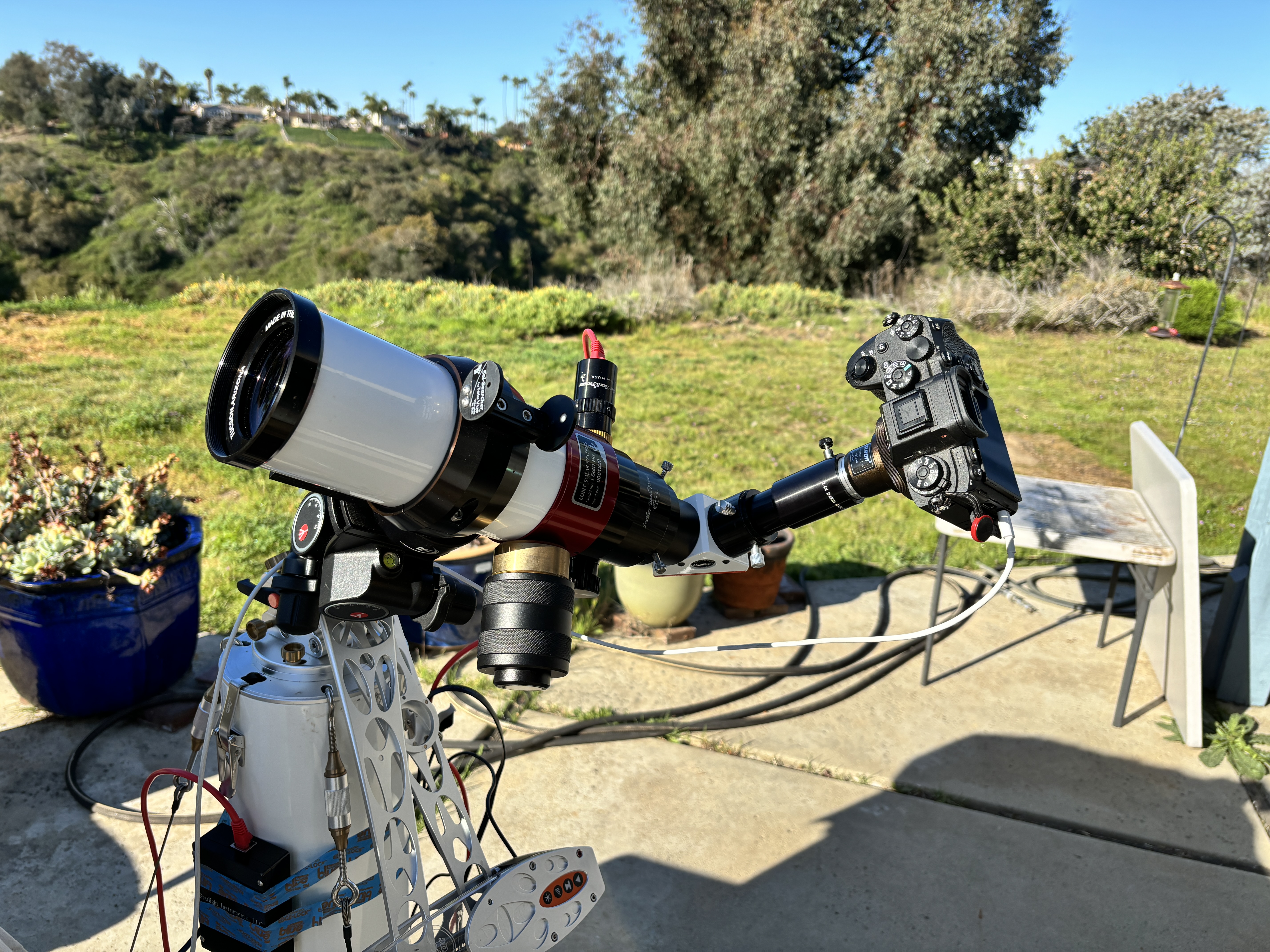Solar Eclipse 2024
Traveling
to see the total eclipse of the sun.
Event Report
20240325-0415
Back to Bill Caid's Home Page
The Experience
Total solar eclipses
happen on planet Earth about 4 times a year. But, eclipses
that are total and cover "reasonably convenient" locations are
something rare. Since we experienced the last solar eclipse
in 2017, we had our sights on this event. As fate would have
it, the solar eclipse passed over the farm of a friend and they
invited us to join them. We traveled from San Diego to
Herrin, Illinois and back for the event; a non-trivial road trip
with way more freeway miles per day than I would have
preferred. But, we were "on the clock" and needed to get
there, see the eclipse and get back in time to prepare for our
trip to Spain and Portugal.
We took hundreds of photos and down-selected for the shots that
were the most representative of the event. All the photos
below were taken by either myself or Kathleen with our set of
digital imaging devices: Sony A1, A7R4, Fujifilm XT-4 or PlayerOne
solar camera. The standard cameras used a 13.5 stop neutral
density filter 100-400mm zoom with 2x doubler. My Lunt hydrogen
alpha solar telescope was on an Astrotrack portable tracking
mount.. SER format video was captured using the FireCapture
application on my laptop talking to the PlayerOne camera.
Depending on the image source, stacking was done with
Autostakkert! 3 and then "developed" with with Capture One.
The photos below are
what we saw.

This
is a shot of my setup with the Astrotrack tracking mount, Lunt
scope using a 2.5x Barlow extender connected to my Sony A1
camera. Also visible is my "Feather Touch" stepper motor
focusing aid. There are a lot of "moving parts" in this setup.

Here, the PlayerOne camera is attached to the Lunt scope with
the Barlow extender. The USB cable at the bottom of the
camera is connected to my laptop running the FireCapture control
application.


Using
my setup, excellent results are possible. This photo,
however, is not critically focused as the coastal haze in San
Diego prevented good focus. But, with sufficient video
frame stacking and some aggressive post-processing, an
acceptable result can be achieved. These solar flare are
huge. We were aware that the weather could prevent us from
getting any photos at all, but hope springs eternal.
Kathleen and I were committed and decided to go no matter what
the weather.

We fully lucked out on weather. Eclipse day dawned clear
with some haze but no significant clouds. Before the
eclipse started, I got a shot with the Sony A7R4 at 800mm with
neutral density filter. The sunspots were less numerous
than they had been in the prior weeks leading up to the
eclipse. Overall focus acuity was impacted by the haze.
We busied ourselves setting up our solar scope and controls in
anticipation of the eclipse. I paused during the setup to
get this "in progress" shot.

This was the first usable shot from the hydrogen alpha solar
scope and monochrome camera. The high clouds and haze
prevented us from achieving critical focus, thus the
fuzziness. We had problems with the camera all day,
essentially preventing us from capturing the totality in the
hydrogen alpha spectrum.

The PlayerOne camera repeatedly disconnected from my
laptop and would not reconnect. We were not sure if it was
an application thing, a cable/adapter thing or an operator
error. We came out of our frustration funk and got another
in-progress shot with the Sony and neutral density filter.

The eclipse was progressing nicely and almost at totality.

A bit past the onset of
full totality. Note the coronal glow and the (seemingly)
small eruption at about 6 o'clock as well as the larger flare
at 12:30 at the top.

As the eclipse progressed, the small eruption at the bottom was
revealed to be huge.

Applying some post-processing adjustments to the tone curve
highlighted the eruptions. Note that the magnetic field
lines of the corona are now visible.

This shot was taken a few seconds later and also used tone curve
adjustments. Now the flares are clearly visible.

One more shot a few seconds later. In my opinion, this
shot of the eclipse was the best.

Post totality. Sony at 800mm with neutral density filter.

Almost back to normal.

Prior to the PlayerOne camera going south, we got this "full
disk" photo of the sun. This camera is only 3MP, but has
small pixel size so is capable of high resolution (assuming it
will talk to the laptop). This photo was produced by
taking a 30 second SER format video (16 bit) and then stacking
the individual frames to average out the haze and atmospheric
distortion. The subsequent monochrome image was sharpened
and then artificially colorized to produce a "pleasing" orange.
We prepared extensively
for this event. We purchased special purpose "devices" like
the neutral density filters and the PlayerOne camera. We
trained and did full setup and tear-down multiple times before the
actual eclipse. None of that preparation could withstand the
connection failure of the camera, so we resorted to the
tried-and-true: a hand-held shot while bracing the camera.
Despite the hardware failure, we were lucky that the weather
cooperated. In general, it was a great experience and worth
the many days of driving.
Many thanks to our hosts Mark and Gail for letting us visit them
and stay on the farm.
Back to Bill Caid's Home Page
Copyright Bill Caid 2024. All rights
reserved.














